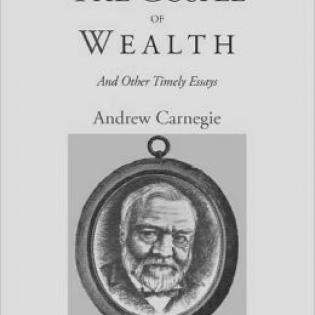Andrew Carnegie and the Gospel of Wealth
Grades:
11, 12
Subjects:
Keywords & Concepts:
To introduce students to Andrew Carnegie as one of the outstanding early philanthropists of the United States.
Duration
Print1 hour
Objectives
Students will:
- Learn about Andrew Carnegie and his philosophy of giving
- Compare current philanthropic needs with those of Carnegie’s time
- Learn about philanthropists throughout history and share ideas about the times and reasons for each philanthropists’ passion
- Learn about the influence of the Carnegie Corporation of New York (Andrew Carnegie’s foundation)
Materials
- Class set of Carnegie, Andrew (1889). “The Gospel of Wealth.” Or online access: Kirkland, Edward C. (Ed.) (1993). Harvard University Press. Reprinted by Indiana University Center on Philanthropy, Indianapolis. Digital download through Philanthropy Resources Online (PRO) at the Joseph and Matthew Payton Philanthropic Studies Library, IUPUI. [https://ulib.iupuidigital.org/digital/collection/PRO/id/32503]
- Schug, Mark C., Caldwell, Jean and Ferrarini, Tawni Hunt (2014). “Lesson 23: Bigger is Better: The Economics of Mass Production.” In Focus: Understanding Economics in United States History. National Council on Economic Education. [See Handout]
- Carnegie Corporation of New York website [https://www.carnegie.org/]
Instructions
Print
Students read Carnegie's "Gospel of Wealth" for homework.
Faculty lecture about Carnegie's story and influence in philanthropy, as well as "The Economics of Mass Production."
Students complete worksheet from Lesson 23: Bigger is Better: The Economics of Mass Production.” Activity 23.1: “Andrew Carnegies and the American Steel Industry” (page 270) and determine their "six needed areas of philanthropic giving."
Hold class discussion.
Assessment
Students compare their list of six needed areas of philanthropic giving with Carnegie’s.
